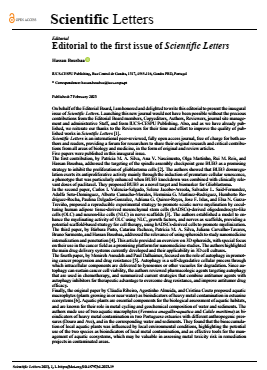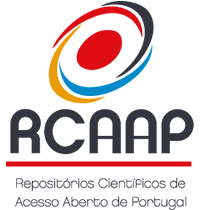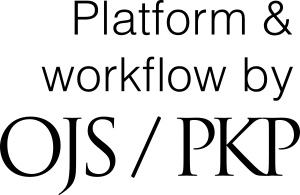Editorial to the first issue of Scientific Letters
DOI:
https://doi.org/10.48797/sl.2023.19Keywords:
first issue SLAbstract
On behalf of the Editorial Board, I am honored and delighted to write this editorial to present the inaugural issue of Scientific Letters. Launching this new journal would not have been possible without the precious contributions from the Editorial Board members, Copyeditors, Authors, Reviewers, journal site management and administrative Staff, and from IUCS-CESPU publishing. Also, and as we have already published, we reiterate our thanks to the Reviewers for their time and effort to improving the quality of published works in Scientific Letters [1].
Scientific Letters is an international peer-reviewed, fully open access journal, free of charges for both authors and readers, providing a forum for researchers to share their original research and critical contributions from all areas of biology and medicine, in the form of original and review articles.
Five papers were published in this inaugural issue.
The first contribution, by Patrícia M. A. Silva, Ana V. Nascimento, Olga Martinho, Rui M. Reis, and Hassan Bousbaa, addressed targeting of the spindle assembly checkpoint gene BUB3 as a promising strategy to inhibit proliferation of glioblastoma cells [2]. The authors showed that BUB3 downregulation exerts its antiproliferative activity mainly through induction of premature cellular senescence, a phenotype that was particularly enhanced when BUB3 knockdown was combined with clinically relevant doses of paclitaxel. They proposed BUB3 as a novel target and biomarker for Glioblastoma.
In the second paper, Carlos I. Valencia-Salgado, Selene Jacobo-Arreola, Salvado L. Said-Fernandez, Adolfo Soto-Dominguez, Alberto Camacho-Morales, Herminia G. Martinez-Rodriguez, Humberto Rodriguez-Rocha, Paulina Delgado-Gonzalez, Adriana G. Quiroz-Reyes, Jose F. Islas, and Elsa N. Garza-Treviño, proposed a reproducible experimental strategy to promote sciatic nerve myelination by coculturing human adipose tissue-derived mesenchymal stem cells (hADSCs)-derived oligodendrocyte-like cells (OLC) and neuron-like cells (NLC) in nerve scaffolds [3]. The authors established a model to enhance the myelinating activity of OLC using NLC, growth factors, and nerves as scaffolds, providing a potential scaffold-based strategy for cell therapy, using hADSCs-derived cells to promote myelinization.
The third paper, by Bárbara Pinto, Catarina Pacheco, Patrícia M.A. Silva, Juliana Carvalho-Tavares, Bruno Sarmento, and Hassan Bousbaa, addressed the relevance of using spheroids to study nanomedicine internalization and penetration [4]. This article provided an overview on 3D spheroids, with special focus on their use in cancer field as a promising platform for nanomedicine studies. The authors highlighted the main drug delivery systems currently developed and their applicability in 3D cell cultures.
The fourth paper, by Monireh Asoudeh and Paul Dalhaimer, focused on the role of autophagy in promoting cancer progression and drug resistance [5]. Autophagy is a self-degradative cellular process through which intracellular components are delivered to lysosomes or other vacuoles for degradation. Since autophagy can sustain cancer cell viability, the authors reviewed pharmacologic agents targeting autophagy that are used in chemotherapy, and summarized current strategies that combine antitumor agents with autophagy inhibitors for therapeutic advantage to overcome drug resistance, and improve antitumor drug efficacy.
Finally, the original paper by Claudia Ribeiro, Agostinho Almeida, and Cristina Couto proposed the aquatic macrophytes (plants growing in or near water) as bioindicators of heavy metals contamination in estuarine ecosystems [6]. Aquatic plants are essential components for the biological assessment of aquatic habitats, and are known for their role in metal cycling and geochemical composition of water and sediments. The authors made use of two aquatic macrophytes (Veronica anagallis-aquatica and Cakile maritima) as bioindicators of heavy metals contamination in two Portuguese estuaries with different anthropogenic pressures (Douro and Ave), and in the corresponding water and sediments. They found that bioaccumulation of local aquatic plants was influenced by local environmental conditions, highlighting the potential use of the two species as bioindicators of local metal contamination, and as effective tools for the management of aquatic ecosystems, which may be valuable in assessing metal toxicity risk in remediation projects in contaminated areas.
Launching a new journal is a long process, and we are committed to taking all the necessary steps to make it a journal that publishes high-impact research findings, and this will not be possible without your contributions. We invite you to enjoy reading our first issue, and to consider our journal when submitting your next best works.
References
Editorial Office, S.L. Editorial Acknowledgment to Reviewers of Scientific Letters in 2022. Sci. Lett. 2023, 1, 2, https://doi.org/10.48797/sl.2023.18.
Silva, P.M.A.; Nascimento, A.; Martinho, O.; Reis, R.; Bousbaa, H. Targeting BUB3 in Combination with Paclitaxel Inhibits Proliferation of Glioblastoma Cells by Enhancing Cellular Senescence. Sci. Lett. 2022, 1, https://doi.org/10.48797/sl.2022.11.
Valencia-Salgado, C.; Jacobo-Arreola, S.; Said-Fernandez, S.; Soto-Dominguez, A.; Camacho-Morales, A.; Martinez-Rodriguez, H.; Rodriguez-Rocha, H.; Delgado-Gonzalez, P.; Quiroz-Reyes, A.; Islas, J.; Garza-Treviño, E. Promoting Differentiation of Human Adipose Mesenchymal Stem Cells into Oligodendrocyte-like Cells and Neuron-like Cells through Coculture on Decellularized Sciatic Nerves. Sci. Lett. 2022, 2, https://doi.org/10.48797/sl.2022.3.
Pinto, B.; Pacheco, C.; Silva, P.M.A.; Carvalho-Tavares , J.; Sarmento, B.; Bousbaa, H. Nanomedicine Internalization and Penetration: Why Should We Use Spheroids? Sci. Lett. 2022, 3, https://doi.org/10.48797/sl.2022.12.
Asoudeh, M.; Dalhaimer, P. The Role of Autophagy in Cancer Chemotherapy Drug Resistance. Sci. Lett. 2022, 4, https://doi.org/10.48797/sl.2022.10.
Ribeiro, C.; Almeida, A.; Couto, C. The Aquatic Macrophytes as Bioindicators of Heavy Metals Contamination in Estuarine Ecosystems. Sci. Lett. 2022, 5, https://doi.org/10.48797/sl.2022.17.

Downloads
Published
How to Cite
Issue
Section
License
Copyright (c) 2023 Hassan Bousbaa

This work is licensed under a Creative Commons Attribution 4.0 International License.
In Scientific Letters, articles are published under a CC-BY license (Creative Commons Attribution 4.0 International License), the most open license available. The users can share (copy and redistribute the material in any medium or format) and adapt (remix, transform, and build upon the material for any purpose, even commercially), as long as they give appropriate credit, provide a link to the license, and indicate if changes were made (read the full text of the license terms and conditions of use).
The author is the owner of the copyright.








